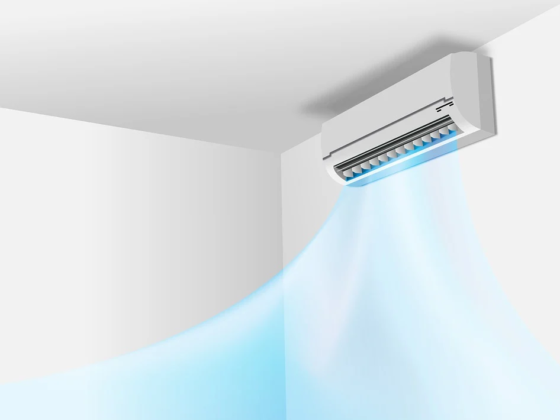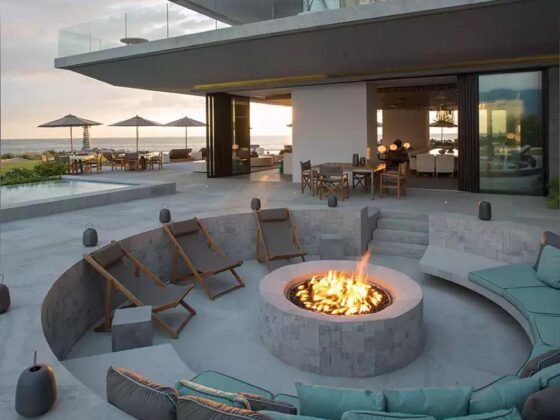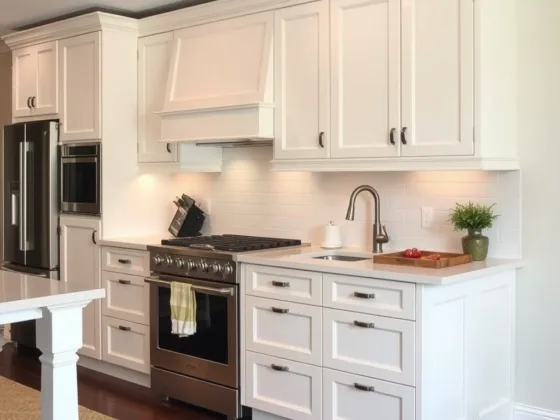Table of Contents Show
Caring for your pool will at some point require you to paint the surface. While this might look like a complicated task best left for professionals, it is still totally doable as a DIY project. But, for the best results, you will first need to make sure you get good pool paint.

Pool paint is different from regular paint in the fact that it needs to be completely waterproof given that it will come in contact with water throughout its service life.
Also, unlike regular paint, pool paint needs to be able to stand up constant exposure to UV rays.
Another thing that sets apart the pool paint from regular paint is that it is typically formulated to be more resistant to abrasions, impact, and scratches from pool toys and other things often used in the pool.
Types of Pool Paint
As you pick up your paint pool, it will also be important to understand the different types available, and here the most common ones are epoxy, acrylic, and chlorinated rubber pool paints.
Read Also:
- What is Pool Coping? What are the Various Types of Coping in Use Nowadays?
- Resurfacing – Keeping your Pool in Great Condition and Preventing Leaks
- Swimming Pool Chemicals help in the Proper Pool Water Maintenance
- 7 Cost Effective Ways to Keep Your Pool Area More Beautiful and Safe
- 9 Key Things to Consider Before Installing a Pool in Your Backyard
- Critical Things to Consider When Seeking Epoxy Floors Carbondale
Epoxy Pool Paint
Epoxy pool paint will work just like any other epoxy whereby it will come in two parts that will require to be mixed. The two parts are the epoxy resins and a hardener. These paints are the longest lasting and will give you a lifespan of up to 8 years.

With the epoxy pools paint, you will also get more resistance to abrasion, chemicals, and stains, which ensures the paint will maintain a pleasant look for a long time.
And for the looks, it will harden into a nice tile-like satin finish and is available in several color options.
Because epoxy paint tends to be thicker than most other types, it will also be very effective at smoothing out any rough and old surfaces, and so if you have an old worn-out pool they can be very effective at restoring it.
Better yet, epoxy also helps fill out hairline cracks on the pool walls.
But, the many advantages of epoxy come at a cost as this is one of the priciest pool paints. Also, it has a longer dry time as you will not be able to fill up the pool for up to a week, and given that you need to mix two different ingredients, there is more work to do.
In short, if budget is not an issue for you, the epoxy pool paint is always the best choice.
Pros
- Longest lasting pool paint
- Highly resistant to chemicals, stains, and abrasions
- Thicker for smoothing out old, rough surfaces
- Very effective at filling cracks
- Variety of color options
- Lovely, tile-like finish
Cons
- More preparation work required
- Longer cure time
- Not easy to apply in high humidity environments
- Relatively more expensive
Acrylic Pool Paint
Acrylic pool paints are some of the most affordable ones. Hence, for those looking to repaint their pool on a budget, this one-part paint will be a fantastic choice.
Also, the fact that it is one part means it will take less time to prepare it, and the applications will also be easier.
There will also be less wait between application and refilling the pool as this paint cures relatively faster.
Depending on the size of the pool and the specific acrylic pool paint model you are using, it will cure in as little as 3 days or even less.
This pool paint type will also be safer and comfortable to use as it does not produce any fumes. And it will work well in any environment including areas with high humidity, and hence it is less restrictive.
Many users will also love the simple clean up as you will only need soap and water to clean your acrylic pool paint.
However, acrylic pool paint is not very long-lasting as you will need to reapply it after every 2 years.
Also, this paint is not as thick as the other two types, and so you should not expect it to cover cracks and rough surfaces. And neither does it hide any discoloration, stains, and imperfections on your pool.
Pros
- Easy mix and application
- Simple cleanup
- Faster curing
- Relatively more affordable
- Does not produce any fumes
- Excellent for use in high humidity areas
Cons
- Not very long-lasting
- Will not fill cracks or cover damaged surfaces
Chlorinated Rubber Pool Paint
The chlorinated rubber pool paint was the most popular pool paint for many years, and for many people, it was almost the universally accepted standard.
This popularity was from the fact that this pool paint will leave a tough but still flexible finish.

Another good trait of this pool paint is that it will adhere well to different surfaces, and so it works for a wide variety of pools.
Also, this paint will leave a nice and smooth finish that should last almost as long as epoxy.
Because this paint is one part, it does not require any mixing, which makes preparation and application easier for you than when using others like epoxy. And cleanup will also be fairly easy.
Also, this is a medium price pool paint that will work for anyone not willing to pay for epoxy but still wants something tough and long-lasting.
But the reason why chlorinated rubber pool paint is no longer widely used in the US is the fact that it produces fumes that can pose health risks.
This pool paint also takes up to 7 days to cure, and it can only be applied to a completely dry pool.
Pros
- No mixing required
- Smooth tile finish
- Adheres well to different surfaces
- Easier to use than epoxy
- More flexible finish
Cons
- Requires completely dry pool surface
- Longer curing time
- Produced fumes
Which Type of Pool Paint Should You Use?
Good pool paint is vital to ensure you keep your pool in good shape and ensure it maintains its aesthetic appeal.
And while you can always call in a professional to do the job and choose the right paint for you, it is vital to understand what to expect from the different paint types.
That said, the right pool paint to use will depend on several factors such as your budget, preferences, and what you already have on your pool. But, where budget is not an issue, the epoxy pool paint is always the best choice.
The acrylic pool paints, on the other hand, are perfect when you want inexpensive and fast-curing pool paint. And unless there is no other alternative, it is better to keep off the chlorinated rubber pool paints due to the health risks.









